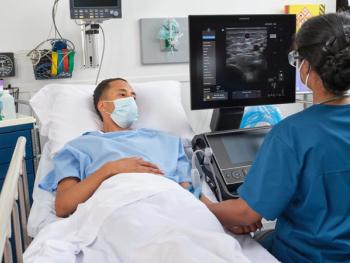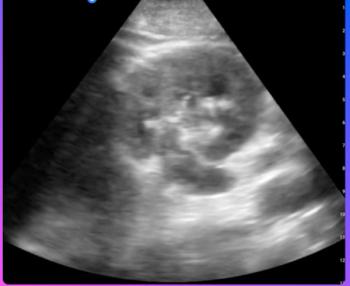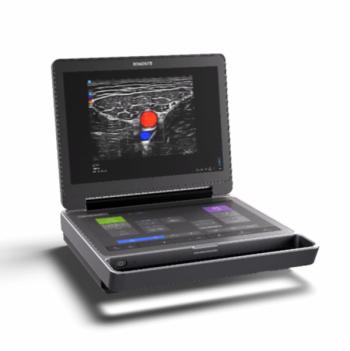
Simulation Training with Breast Ultrasound
Why simulation-based training may be the best way to train residents.
When it comes to medicine, there’s no better way to learn than by doing. And, for residents, trying to learn and master a skill before they treat patients can actually improve outcomes.
This tenet holds true with breast ultrasound, particularly breast ultrasound-guided biopsy. The modality isn’t just a diagnostic tool, it can play a significant role as a didactic one, as well. Simulation-based training has proven to be an effective method for radiologists-in-training to perfect their technique and overcome any frustrations or fears they might have using the technology.
According to a
“Our data suggest that the simulation-based ultrasound-guided breast biopsy training session had a positive impact on breast ultrasound and biopsy knowledge,” says lead study author Ashley Roark, MD, assistant professor of radiology and breast imaging at Baylor College of Medicine. “Our findings suggest that improvements seen in the simulation setting did translate to the clinical setting, which is the ultimate goal of simulation-based training.”
To determine whether simulation-based training would both improve residents’ skills and increase their confidence levels, the team enrolled 21 diagnostic radiology residents from all levels into an hour-long session led by a fellowship-trained breast radiologist. Prior to the session, residents answered a 10-question survey about their knowledge of general breast ultrasound and ultrasound-guided breast biopsy.
Using a turkey breast phantom with olives inserted to mimic masses, the session included guidance on the basic controls and functions of the ultrasound machine, image optimization techniques, and appropriate labeling and documentation of biopsy images. In addition, residents learned about needle safety, patient positioning for biopsy, and correct ultrasound-guided breast biopsy technique.
Each resident performed a minimum of three biopsies during the training session.
Related article:
Based on study results, after the training session, 95% of residents improved in their breast ultrasound and ultrasound-guided breast biopsy, setting themselves up for better clinical performance in the future. In particular, they were more successful with appropriate needle orientation, biopsy image documentation, and ultrasound equipment specifications. Most residents also reported greater comfort with patient positioning, biopsy technique, device functionality, and appropriate image documentation.
Perhaps, most importantly, the majority of residents indicated the training session helped decrease their anxiety levels about performing an ultrasound-guided breast biopsy. Overall, 38% reported a substantial improvement in their anxiety levels, and an additional 19% said they experienced moderate improvement. In addition, resident confidence levels rose. Of the group, 25% said they experienced a substantial improvement in their confidence with both the modality and the procedure, and 38% reported a moderate improvement in their confidence over performing an ultrasound-guided biopsy with a patient.
Overall, Roark says, the study showed residents gravitated to the simulation-based training with breast ultrasound and ultrasound-guided breast biopsy. Eighty-six percent indicated they preferred this type of training over lectures, observing faculty members, video demonstrations, and the “see one, do one, teach one” apprenticeship method. In fact, all participating residents suggested integrating simulation-based training into the breast imaging rotation curriculum.
By using simulation training, she says, radiology programs can significantly augment the skill set among new radiologists entering clinical practice.
“The data suggest there is still room for improvement in these areas across training levels,” Roark says. “But, the results of post-rotation survey after real-life ultrasound-guided biopsy experience suggest that the training session did have a favorable effect on resident confidence and anxiety levels going into ultrasound-guided biopsies on actual patients.”
Newsletter
Stay at the forefront of radiology with the Diagnostic Imaging newsletter, delivering the latest news, clinical insights, and imaging advancements for today’s radiologists.




























